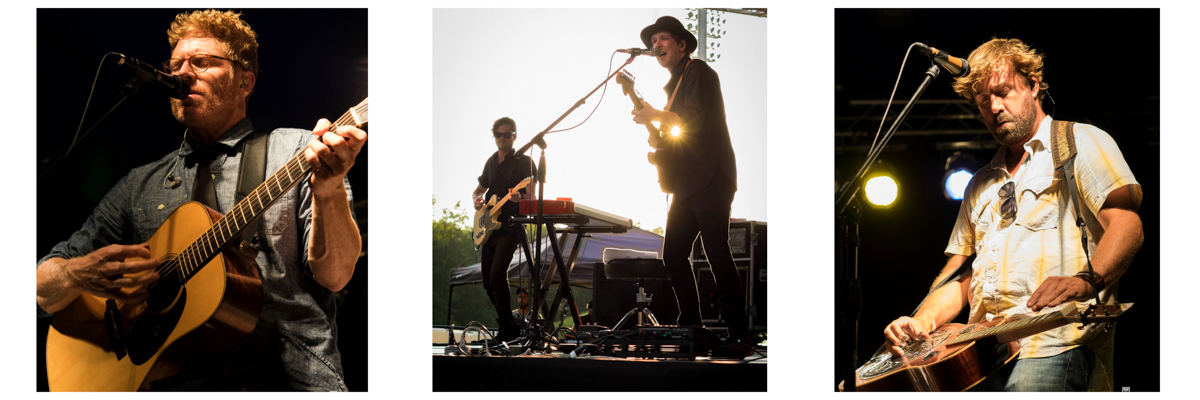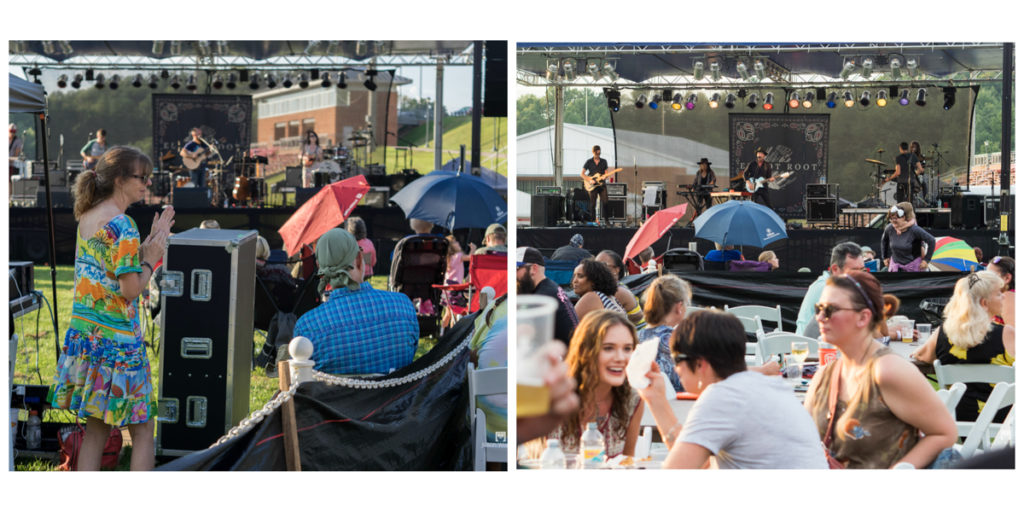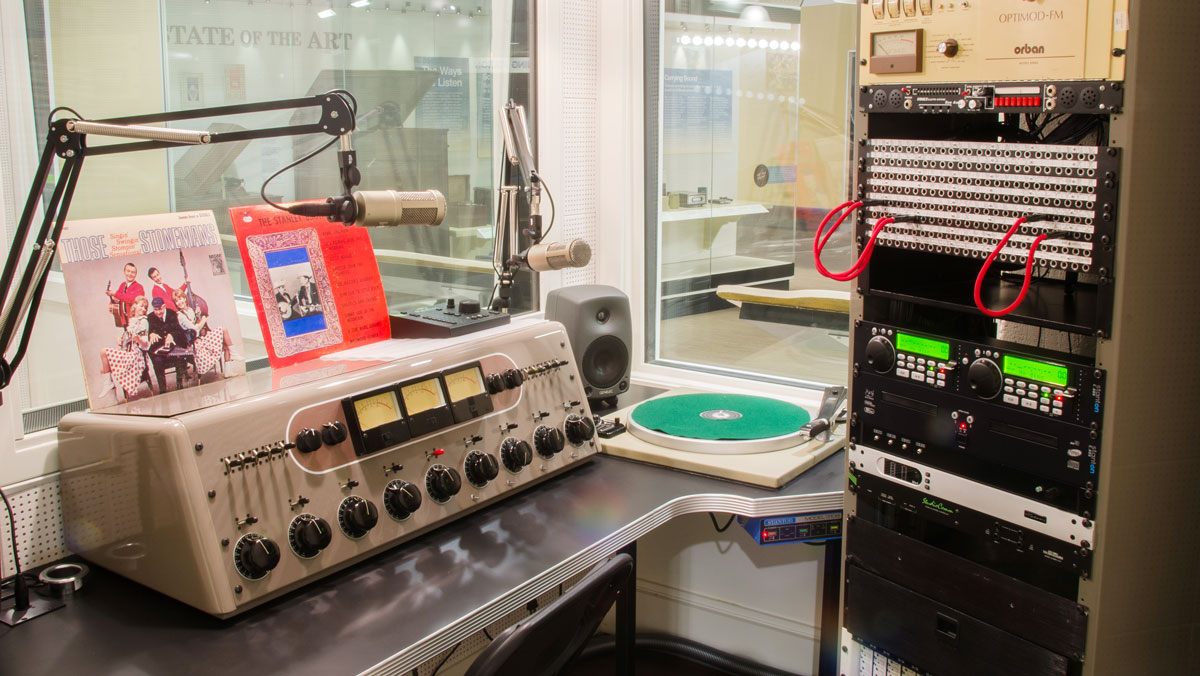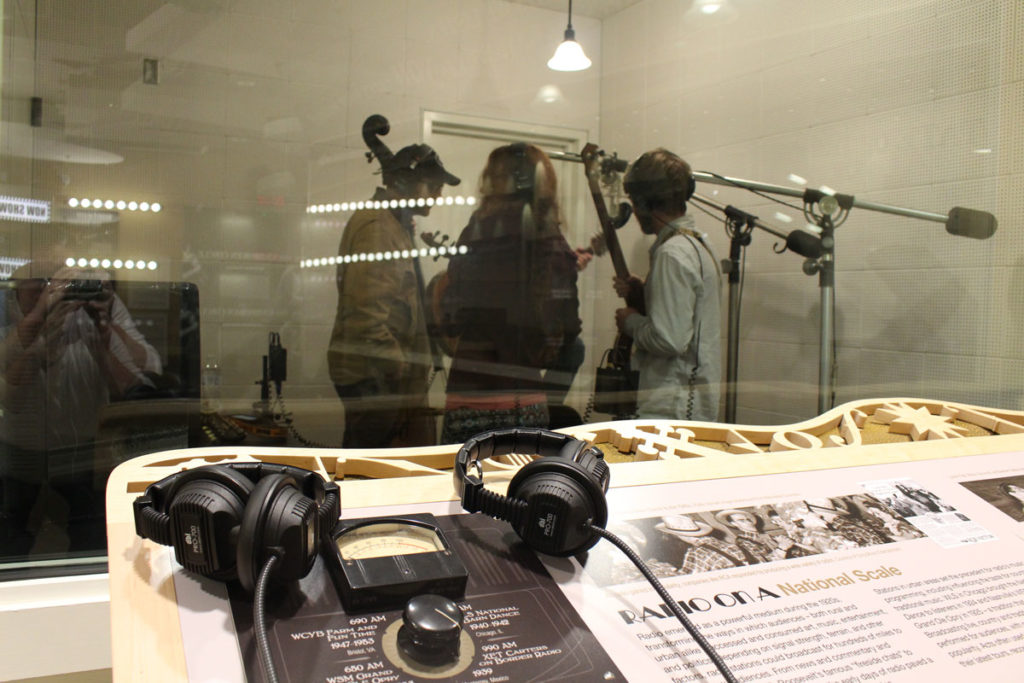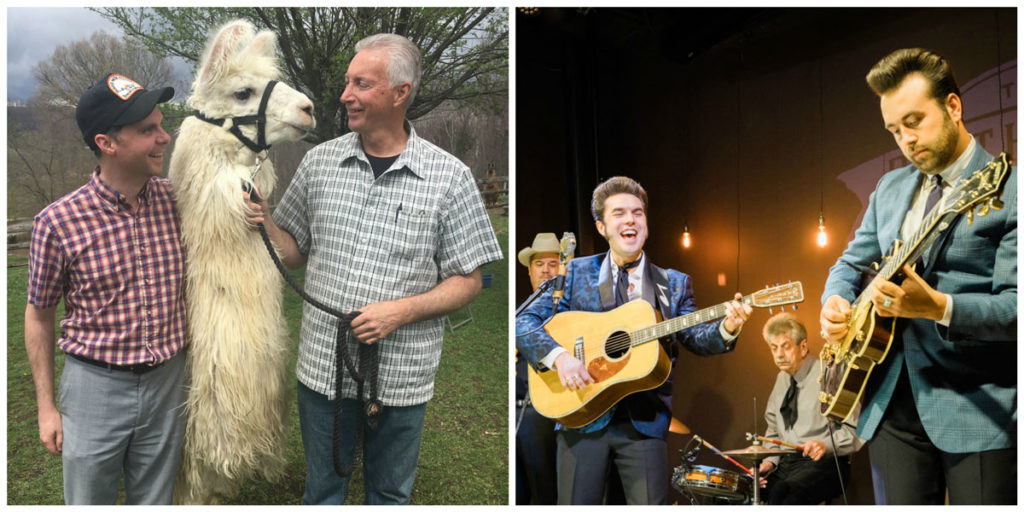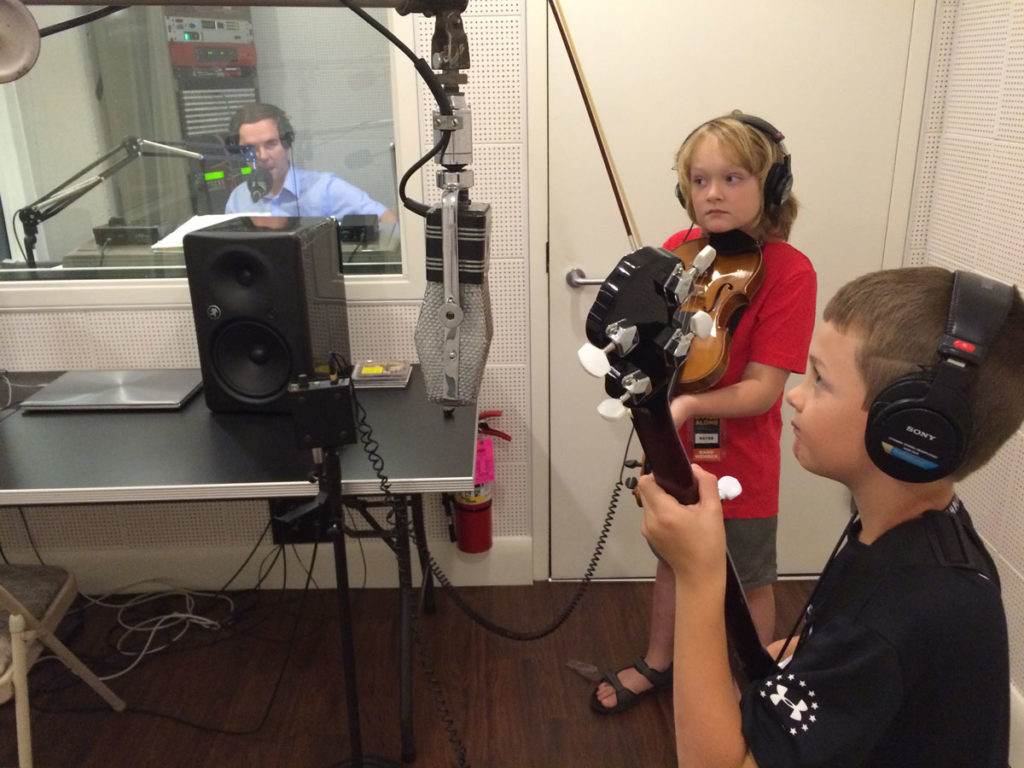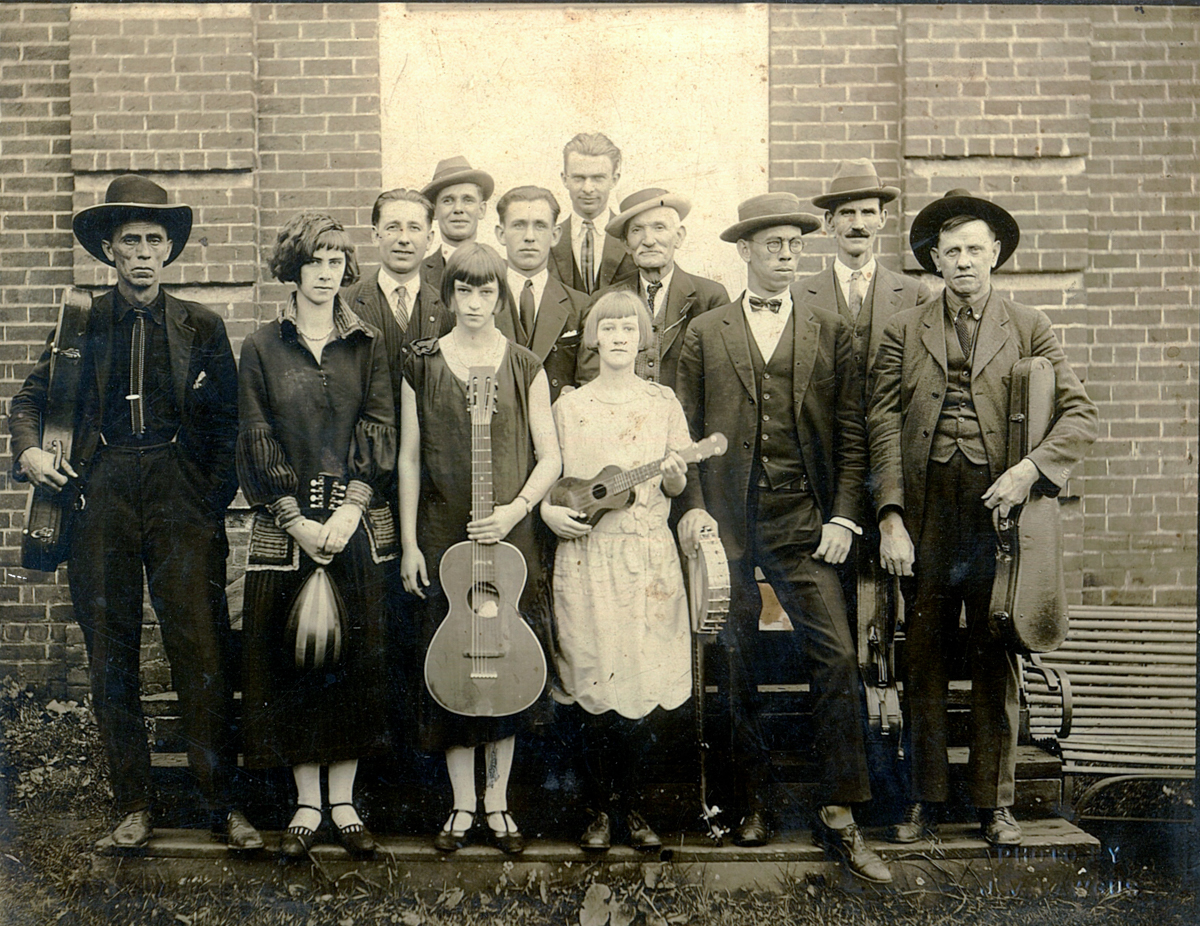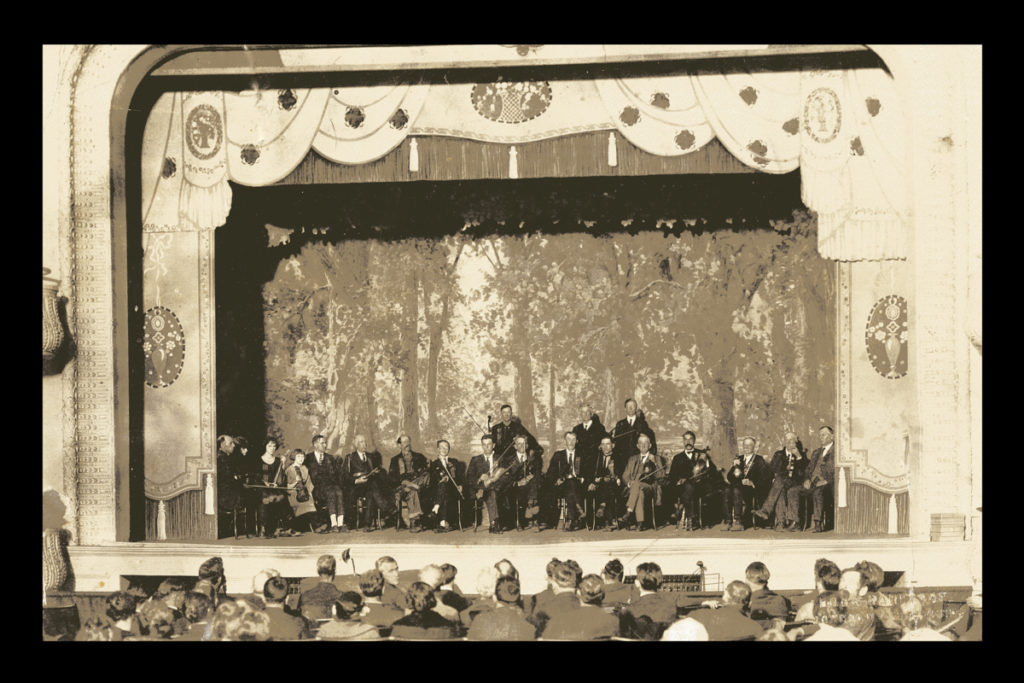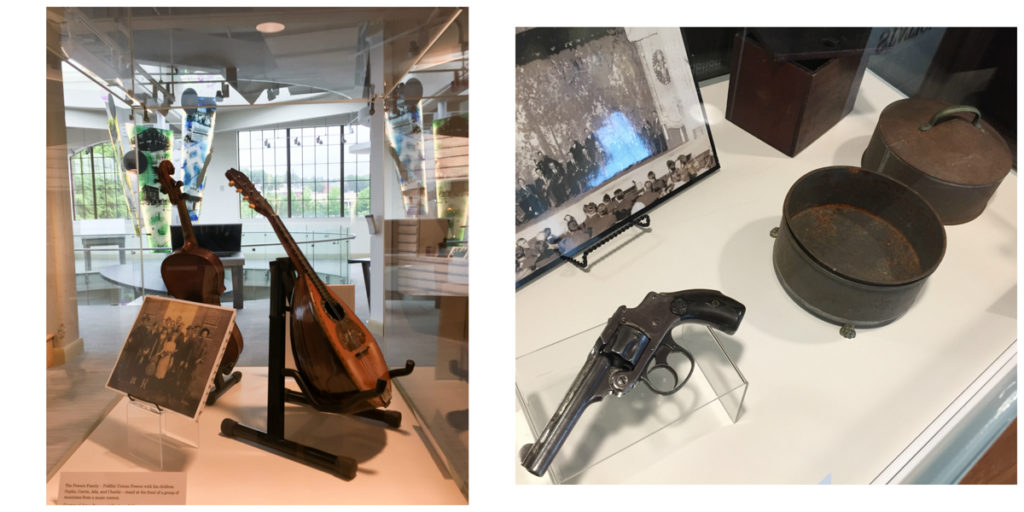At the end of the day this past Saturday we found nine marbles in the museum vault area, locked to the public, inaccessible to all but the few of us who have a key. How on earth did those marbles get there?
It sounds like a mystery or a riddle – you know like the one where you find a body in a pool of water in a locked room with a cat in the window and you have to figure out what happened.* Our story is much simpler, the result of having around 150 children and adults in the museum for our Family Fun Day maker event, held on Saturday as complementary programming to Things Come Apart, our current special exhibit from the Smithsonian Institution Traveling Exhibition Service (SITES).
We have worked hard to find cool ways to engage the public with this SITES traveling exhibit, and one of our earlier blog posts went into more detail about the planning that went into this exhibit and the related programming. Our biggest event during the exhibit has been Family Fun Day – filled to the brim with a variety of maker-type activities. Check out the pictures and videos below to get a real sense of the fun, invention, and sheer enthusiasm that kids of all ages, from 2 to 92, brought to the event – and to find out how those marbles got in the vault!

The Bristol Public Library brought their 3D printer to the museum, giving kids and adults the chance to explore the software used to create 3D designs and then see the printer in action. To illustrate the printer’s capabilities, they had a variety of printed objects on display from small hearts to a flower in a vase to a megalodon tooth – and even a prosthetic hand, made for the charity Prosthetic Kids Hand Challenge. Individual guitar picks embellished with text chosen by each person were also designed, printed, and given out – perhaps inspiration for future engineers AND musicians!

Upcycling is cool these days; all you have to do is hit Pinterest to find hundreds of craft ideas to make from common recyclables. Our Bristol Rhythm & Roots Green Team is always looking for new ways to be crafty with kids, and they brought out the washi tape, stickers galore, pom poms, and cloth flowers – plus a 5-pound bag of rice and a box of dry macaroni (because it’s never a real craft project until you use dry macaroni…) – to make old plastic bottles into maracas. There was a whole lot of shaking going on throughout the day!
Wood and metal worker extraordinaire Terry Clark, along with his wife Deb, brought items big and small with them to show our visiting families the cool and functional art you can make from a host of “found” objects. From the dragon weather vane to the lamp made from World War I helmets, the creativity on display was fantastic. And while kids got the chance to take away colorful iron spigots, I got the chance to see a steampunk spinning wheel in action.
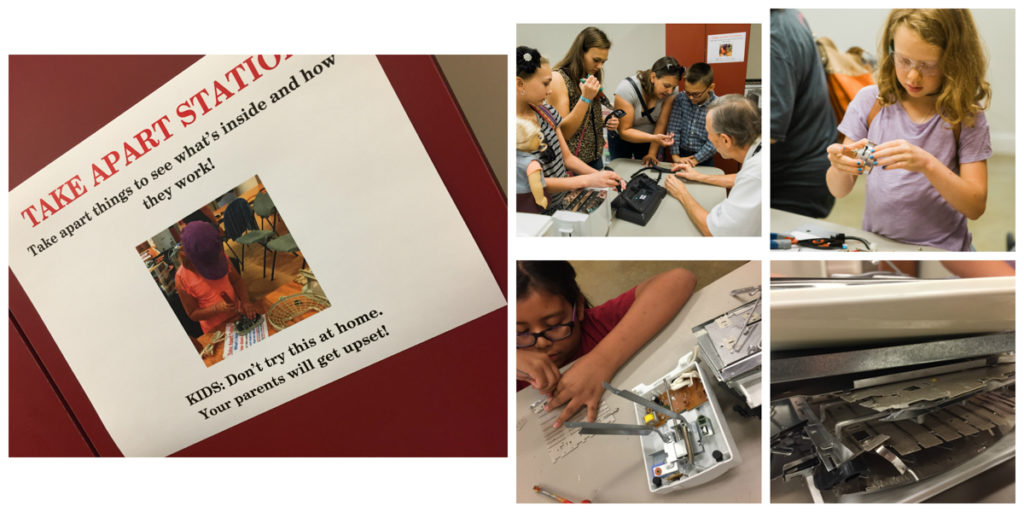
A “take apart” table proved to be one of our most popular activities. We had kids clustered round the table for the entire event, brows wrinkled, tongues sticking out, intense concentration on display as they unscrewed, pried open, pulled off layers, and took every single electronic completely and totally apart. At hour three of the day, I had to run to the local thrift store and buy some more items. Several of the kids took home bits and bobs from their taken apart objects, excited to show other members of their families and their classmates at school what they got up to at the museum over the weekend. It was wonderful to watch the excitement the kids felt as they examined the innards of all these common, everyday objects. And just in case that excitement carried over to home, we put up a sign saying “KIDS: Don’t try this at home. Your parents will get upset!”

The Smithsonian’s Lemelson Center for the Study of Invention and Innovation’s Spark!Lab provided three activity kits with the Things Come Apart exhibit. One of these is focused on creating soundscapes by sending marbles along a variety of wooden pathways that have different methods of producing sound. This soundscape activity has proved hugely popular with all ages, from toddlers to teachers. For Family Fun Day we set up the soundscape activity kit in the gallery, not too far from where the locked doors to our vault are found. Long pathways, tall pathways, curving around on themselves pathways were built; marbles were launched; bells rang, xylophones clanged, metal clinked, and wood knocked – and marbles went absolutely everywhere. Despite our eagle eyes and unbeknownst to us, quite a few escaped, shooting through the small crack under the vault door, only to be found later by Emily, our collections manager. We might still be finding marbles for days to come.
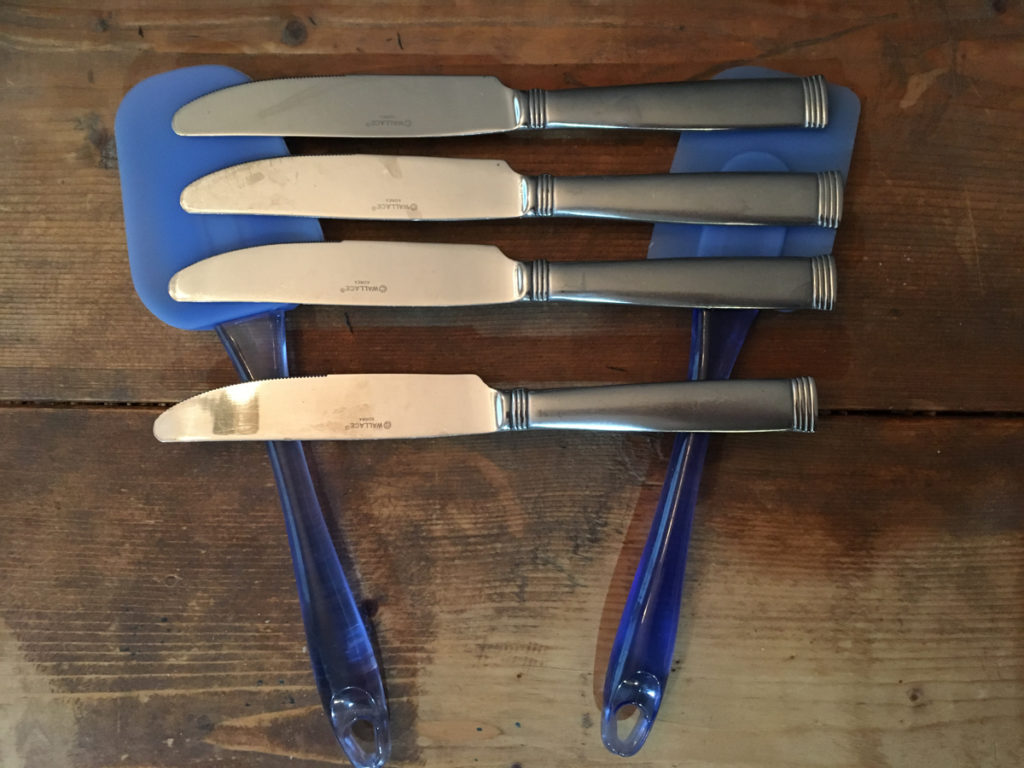
Families also got the chance to take a maker project home with them – we had a take-home instructable on how to create your own “wrenchophone,” generously shared with us by Maker Media from the book Make: Musical Inventions, DIY Instruments to Toot, Tap, Crank, Strum, Pluck and Switch On by Kathy Ceceri. This project showed kids how to make their own musical instrument at home – in the instructions, wrenches were used, but our museum director’s son Ian got creative, making his own version with butter knives and rubber spatulas. Apparently the spatulas helped to make the knives really ring out!
While all of the activities held on Family Fun Day were great, and the enthusiasm and engagement from the participants was especially wonderful, it was also really satisfying to see the other ways that kids were inspired to create and make in the museum. One of our visitors bought a small Lego kit from The Museum Store and built a small ukulele. But being in a museum meant that he didn’t stop there – he then used the plastic packaging (upcycling!) from the washi tape to create a display case for his ukulele, and wrote out his very own museum label for it to be on display during the event. A future curator perhaps!
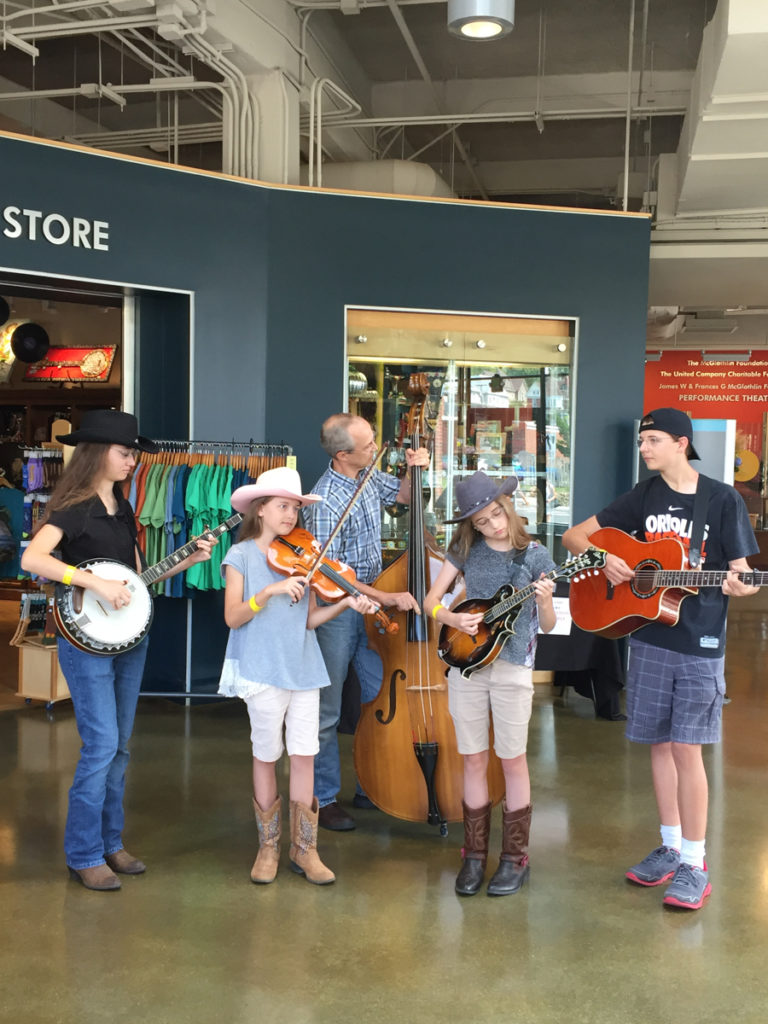
Finally, to cap it all off and to really underline that music is the center of all that we do, a family of five musicians stopped in and asked if they could share some of their tunes with our visitors. With songs from the 1927 Bristol Sessions and The Carter Family in their repertoire, it was a spontaneous and perfect end to a fun day!
René Rodgers is the Curator of Exhibits & Publications at the Birthplace of Country Music Museum.*And by the way, the answer is that the body is that of a goldfish…



